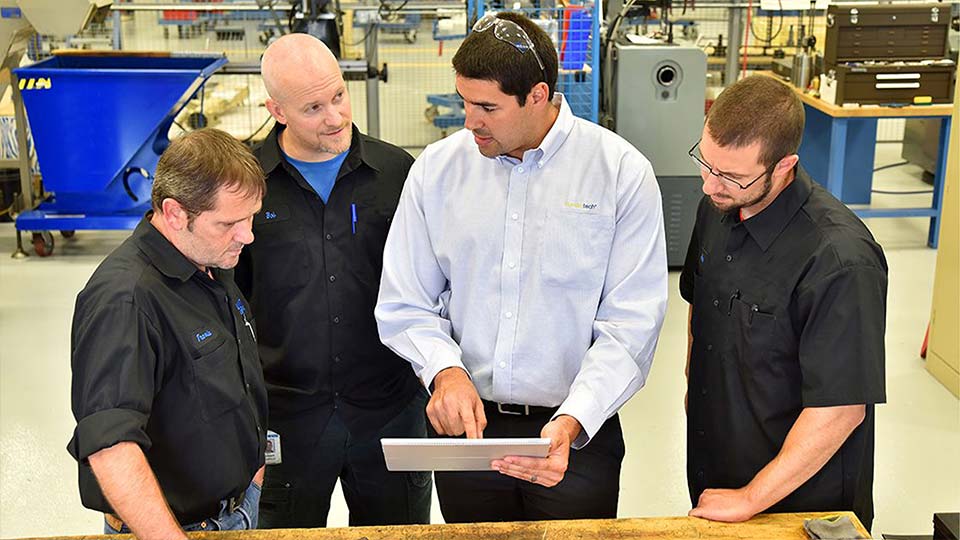Preventing musculoskeletal disorders (MSDs) is the primary reason most organizations have an ergonomics program in place, and preventing MSDs requires identifying and implementing effective controls. Unfortunately, this is precisely the step in the process where many ergonomics teams struggle, but here are 5 impactful things you can do to improve the effectiveness of your ergonomics controls.
Conduct and track follow-up assessments. The best short-term way to verify that you’re implementing effective control measures is to complete before and after risk assessments. The follow-up (after), risk assessment should show that the controls implemented impacted the risk exposure for people doing the job. Without this valuable step, you can’t know how effective your efforts are. Conversely, when you include this step, it’s easier to deploy effective controls throughout the organization. Instead of solving the same problem many times, you can deploy an effective solution across multiple occurrences.
Consider your risk assessment tool. An effective risk assessment tool should provide you with accurate information about the degree of risk exposure, and sufficient detail about the risk exposure to guide your improvement efforts. Risk assessment isn’t just about decimal point differences in accurately predicting incidents, it’s also about understanding the underlying factors contributing to the risk in sufficient detail to implement effective changes. The best risk assessment tool, from a practitioner’s standpoint, isn’t determined by decimal point differences in predictive validity, but rather in providing the information necessary to select the best improvements. Your risk assessment tool should be able to direct you in identifying meaningful causes and change the exposure to these causes.
Embrace root cause analysis. The best way to reduce risk exposure is to understand the link between the risk that is present in the job and the tasks required to complete the job. This requires a risk assessment tool that can provide sufficient detail in describing the risks. In ergonomics, we know that these risks revolve around the working postures, the forces applied in the tasks, the amount of time a person is exposed to these risks, and how often the person doing the job repeats these risk exposures. The degree to which your risk assessment tool allows you to quantify these elements will determine how effectively you can complete a root cause analysis. An effective root cause analysis requires sufficient detail in the analysis phase. The “best” risk assessment tool in ergonomics isn’t just the highest degree of accuracy in predicting incidents, but rather how well the tool helps the users identify specific causes and reduce the exposure to those causes. An effective root cause analysis requires detail on the potential causes. Your root cause analysis should start with the factors identified as being the most likely contributors to overall job risk. When you can focus on the most important causes, you are able to identify more effective controls.
Embrace the hierarchy of controls. Start by looking for solutions that would eliminate the exposure to the risk, and continue to make changes to the work that will reduce the risk. Administrative tasks, work practices, and employee training should be used sparingly, and only when you can’t improve the job. Remember that PPE offers minimal benefits for reducing MSDs.
Use employee input effectively. If you don’t listen to the people doing the job, your ergonomics efforts won’t be successful. However, you can improve your results by asking the right questions at the right time in the process. When you’re conducting a risk assessment, ask questions that will help you understand the job better. For instance:
- What is the hardest part of this job?
- Are some parts harder or easier to complete?
- What happens when (parts aren’t stocked, a part sticks, you have to change fixtures)?
- Are there tasks I didn’t see during my assessment?
Once you understand the risk exposures, it’s time to ask questions about the causes of those risks and solicit ideas for addressing those risks and causes. Learn about what has been tried in the past and why it didn’t work or why it isn’t being done now. Ask about any ideas they might have to address specific issues.
Following a consistent job improvement process will result in reducing MSDs. Start with an MSD risk assessment tool that can direct your intervention efforts, understand the causes of the risks identified, select controls that eliminate or reduce occurrence of the risk, and complete follow-up assessments to verify the risk reduction.
